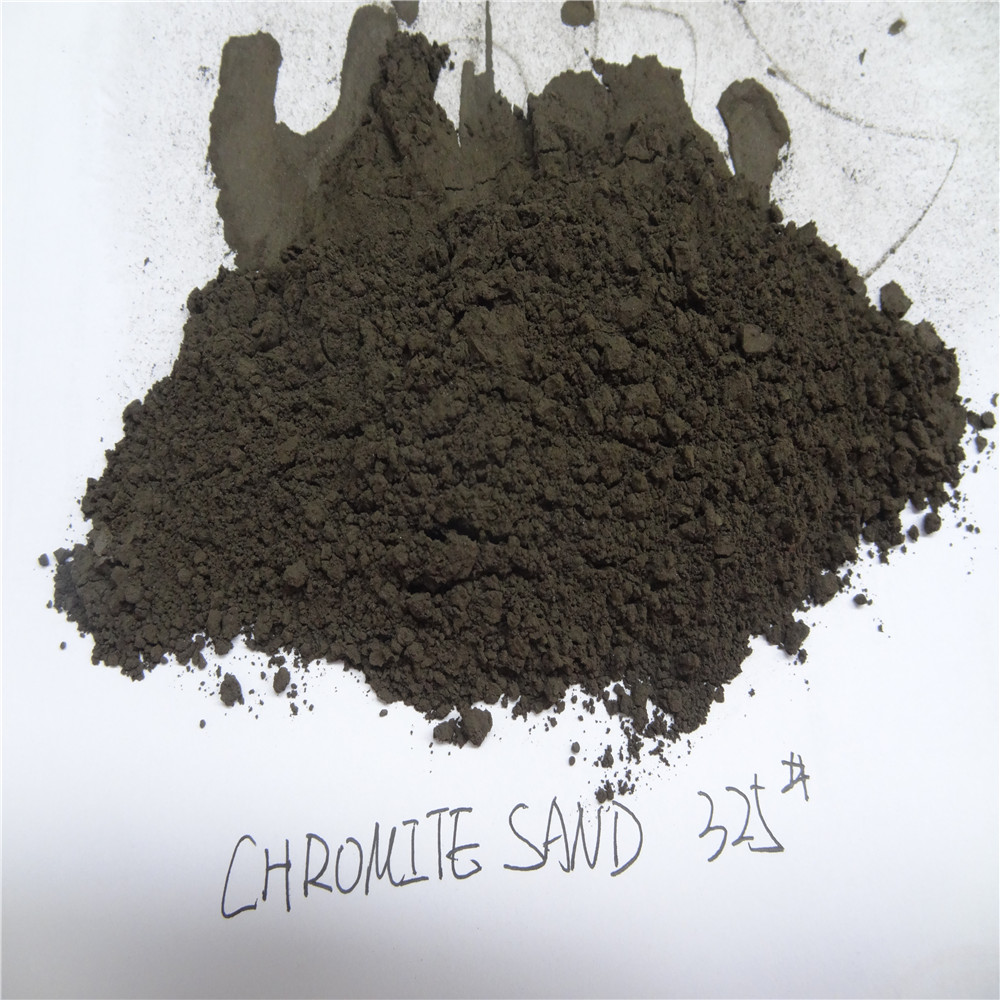Chromite flour is a fine, granular material produced by grinding chromite ore (a mineral composed primarily of iron chromium oxide, FeCr₂O₄). The “325-mesh” designation refers to its particle size distribution, meaning the vast majority of the particles are fine enough to pass through a sieve with 325 openings per linear inch. This equates to a maximum particle size of approximately 44 microns (µm).
Its key properties make it a critical material in industrial applications, most notably in foundry sand casting and refractory linings.
Key Properties of 325-Mesh Chromite Flour
1. Physical Properties
Particle Size: Typically 95-99% passes through a 325-mesh sieve (44 µm). The average particle size (D50) is often in the 10-20 µm range.
Appearance: Dark greyish-black to black fine powder.
Specific Gravity: High, typically between 4.0 – 4.8 g/cm³. This is significantly denser than silica sand (2.65 g/cm³).
Melting Point: Very high, approximately 2,150°C (3,902°F). This is its most valuable property for foundry use.
Thermal Conductivity: High. It conducts heat much more efficiently than other molding sands like zircon or silica, promoting rapid cooling of the casting.
2. Chemical Properties
Chemical Composition: Primarily FeO·Cr₂O₃ (Iron Chromite). Key components:
Cr₂O₃ (Chromium Oxide): 44% – 48%
FeO (Iron Oxide): 20% – 25%
SiO₂ (Silica): 2% – 4%
Al₂O₃ (Alumina): 12% – 16%
MgO (Magnesia): 10% – 14%
pH: Neutral to slightly basic. It is chemically inert and does not react with molten metal oxides, preventing burn-on and sand fusion.
Thermal Stability: Excellent. It exhibits very low linear expansion upon heating, meaning it does not significantly expand and cause casting defects like veining or rat-tails.
3. Thermal Properties (Most Critical for Application)
High Refractoriness: Its high melting point allows it to withstand the extreme temperatures of ferrous metals like steel and high-alloy iron without fusing.
High Heat Absorbance (Chill Effect): Due to its high density and thermal conductivity, it acts as a “chill,” rapidly drawing heat away from the molten metal. This promotes a fine-grained, superior metallurgical structure in the casting, especially in sections prone to shrinkage defects.
Low Thermal Expansion: Its expansion upon heating is minimal and linear, which drastically reduces the occurrence of expansion-related casting defects compared to silica sand.
Primary Applications Leveraging These Properties
Foundry Sand Casting (Core & Molding Sands):
Paints/Wash: Mixed with a refractory binder (e.g., sodium silicate, resin) and water to create a slurry that is sprayed or brushed onto patterns and core boxes. This creates a high-refractory face coat.
Addition to Molding Sand: Blended into silica sand mixes (typically 10-35%) for casting steel and large iron castings. It improves the overall refractoriness of the mold, reduces thermal expansion, and enhances cooling.
Cores for Critical Sections: Used to make cores where extreme heat resistance is needed, such as for piping and feeding systems in steel castings.
Refractory Industry:
Used as a raw material in the production of magnesia-chrome and chrome-magnesia bricks and monolithic refractories for high-temperature industrial furnaces (e.g., cement kilns, glass furnaces, non-ferrous metal furnaces).
Advantages
Excellent Refractoriness: Ideal for high-pouring-temperature metals.
Superior Casting Finish: Produces smooth casting surfaces with minimal burn-on and penetration.
Reduces Defects: Minimizes veining, rat-tailing, and metal penetration defects due to low thermal expansion.
Improves Metallurgy: Promotes directional solidification, reducing shrinkage porosity and improving mechanical properties.
Chemically Inert: Does not react with molten metal slags.


